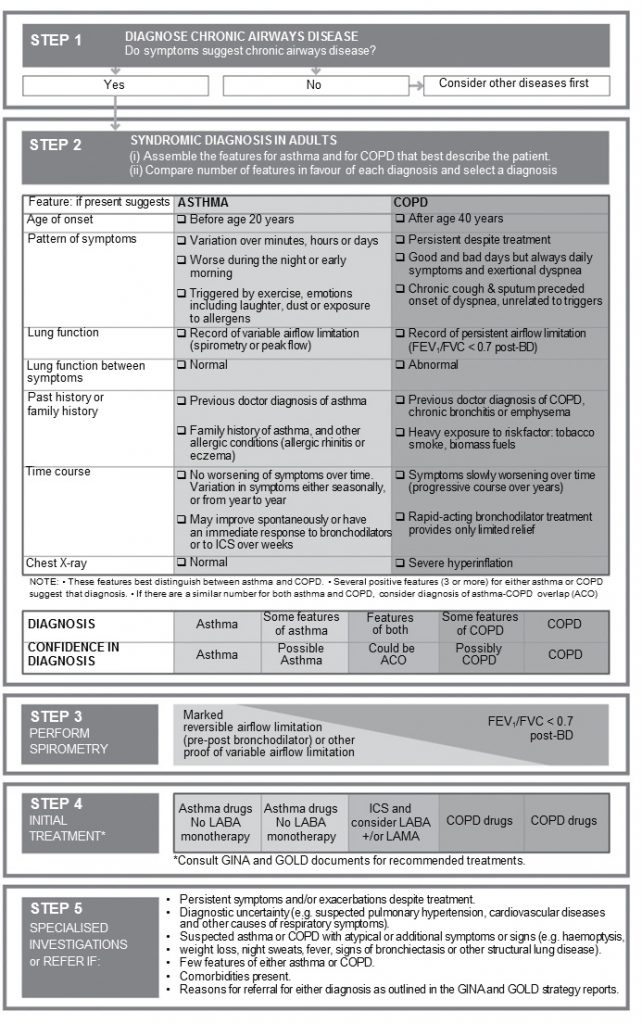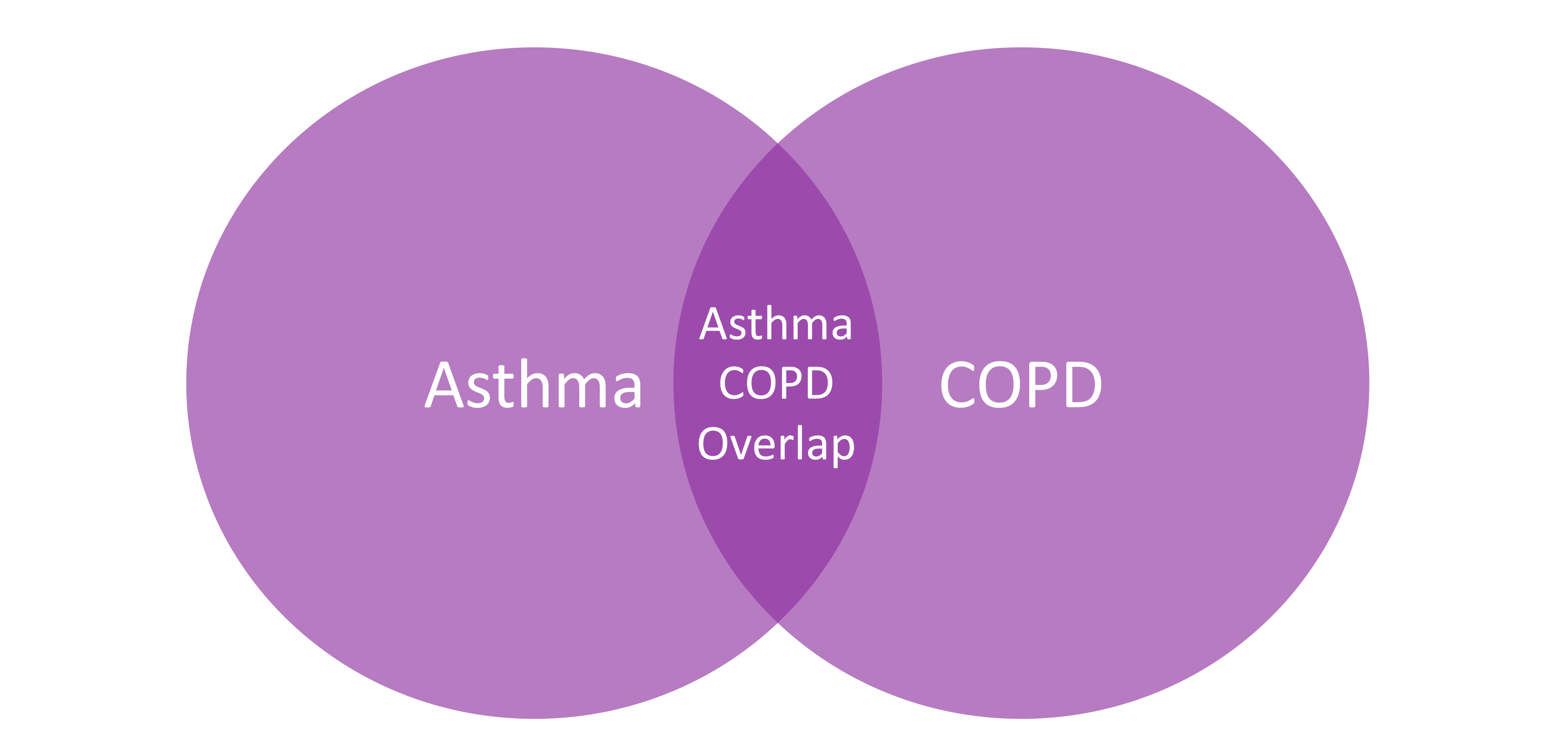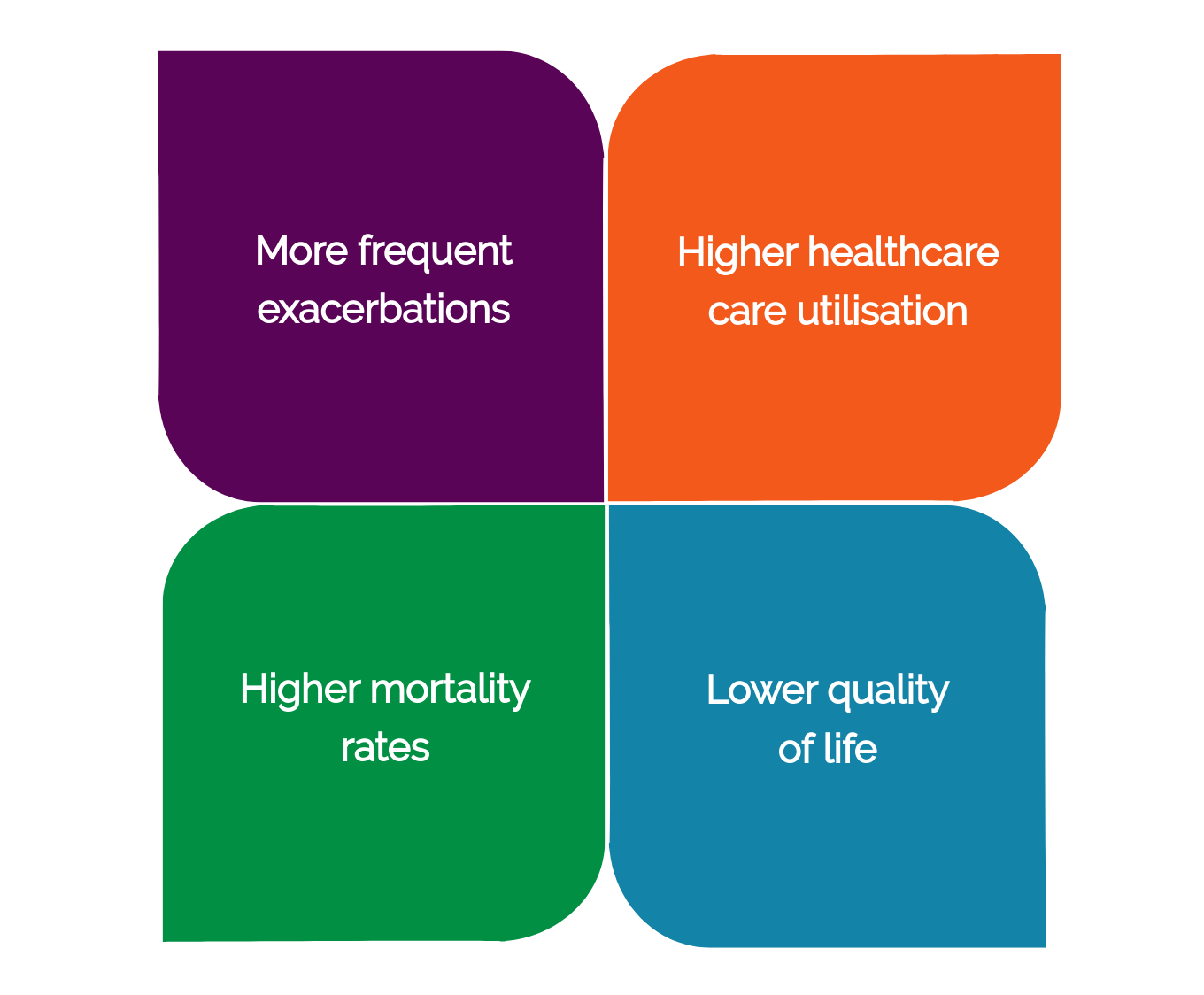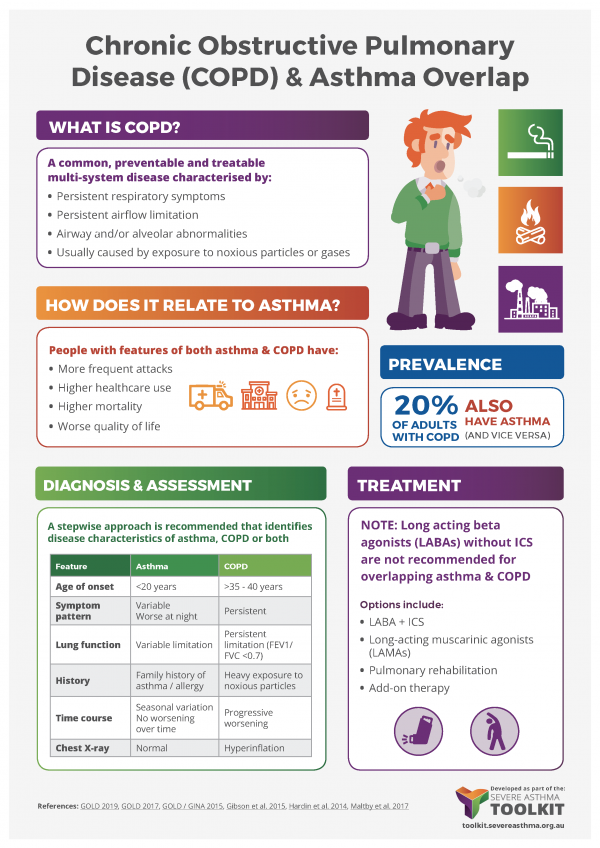Unlike asthma, Chronic Obstructive Pulmonary Disease or COPD is defined with spirometry and is characterised by persistent airflow limitation with an FEV1/FVC ratio of <0.7 (GOLD 2022). Furthermore, for a diagnosis of COPD the individual must have a history of exposure to noxious particles or gases (GOLD 2022). It has become increasingly apparent that many patients with asthma have features of COPD and vice versa. For more information see the GINA / GOLD Asthma, COPD and Asthma-COPD Overlap Syndrome Resource
Chronic Obstructive Pulmonary Disease (COPD)
Prevalence
The prevalence of co-existent COPD in adult asthma populations is approximately 20% (Gibson et al. 2015). Patients with asthma and co-existent COPD experience (Hardin et al. 2014):
Diagnosis
A useful stepwise approach to diagnosis and initial treatment has been developed in collaboration between GINA & GOLD. (The approach is available on page 17 – Box 4).

Image presented with permissions from GINA & GOLD. This sheet can also be downloaded here.
Treatment
There is little high-quality evidence to guide clinicians in treating patients with suspected COPD-asthma overlap. Use of long acting beta agonists (LABAs) without inhaled corticosteroids is recommended as first line therapy in COPD (COPD-X Guidelines 2020), but should be avoided in patients with co-existent asthma due to potential harm (GINA 2022).
Long acting muscarinic antagonists (LAMAs) are an option in this patient population, given that there is evidence for their use in patients with COPD (COPD-X Guidelines 2020) and in patients with severe asthma (GINA 2022).
Pulmonary rehabilitation in symptomatic patients with COPD reduces exacerbations and improves exercise capacity and quality of life (COPD-X Guidelines 2020). Whilst this intervention has not been well studied in patients with COPD and co-existent asthma, we suggest that symptomatic patients with impaired lung function due to with COPD and co-existent asthma should be considered for pulmonary rehabilitation.
In patients with severe allergic asthma and coexistent COPD, omalizumab the anti-IgE monoclonal antibody, has been found to improve asthma control and quality of life (Maltby et al. 2017).
Last Updated on



